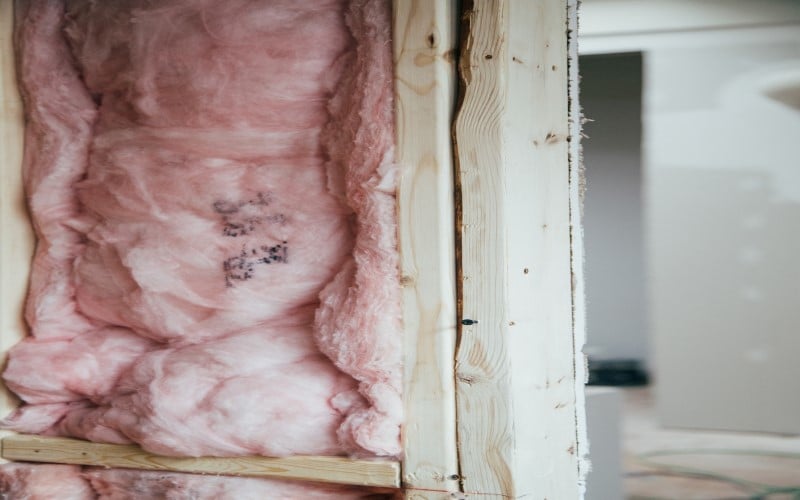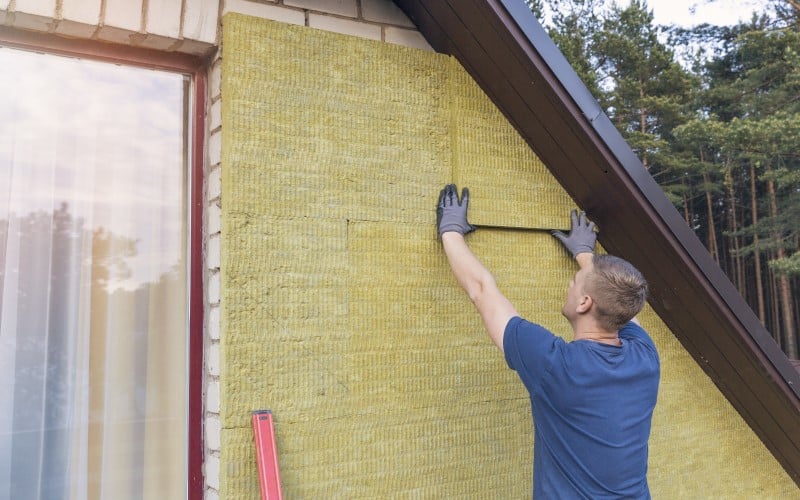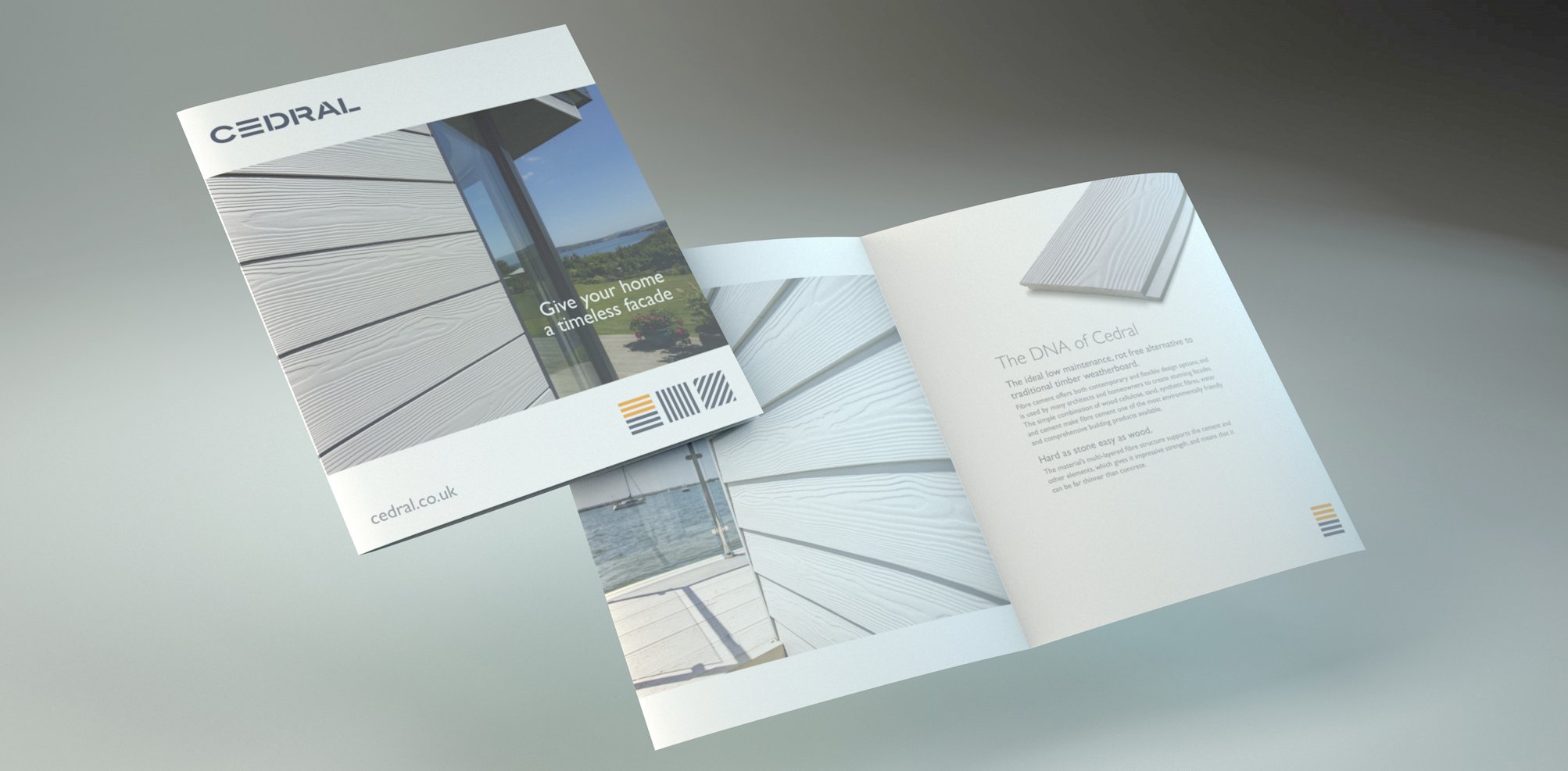Both external and internal wall insulation are very useful. So how do you choose between them? We have listed the advantages and disadvantages of each type of insulation to help you make your decision. In conjunction with exterior wall insulation, Cedral fibre-cement facade cladding is particularly recommended.

The main differences between interior and exterior wall insulation
When insulating the walls of your home, you have two main options. You can add insulation material either to the outside or the inside of your house. Some companies also propose to fill your wall cavity (if any) with insulating flakes, but we won’t add this insulation method to the comparison, as the gain in energy efficiency is generally lower than with exterior and interior wall insulation.
- For exterior insulation, insulation boards are fitted to the outside of your walls, before covering your facade with some kind of cladding or siding, such as Cedral’s fibre-cement weatherboards.
- For interior insulation, the insulation material is added on the inside of your home. Logically, only the walls that are in contact with the outside need to be insulated.
Discover the advantages of insulating your home.
Regardless of the insulation method you choose, you need to consider three aspects:
- Efficiency: what is the thermal resistance of the insulation method (expressed as R-value)? What would be the overall insulation gain (expressed as U-value)?
- Toxicity: are the insulation materials harmless for your health? Can they easily be recycled at the end of their lifespan? Are they fireproof?
- Resiliency: how robust and durable is the insulation method used? What is the expected lifespan of your investment?

Interior wall insulation: pros and cons
Pros interior wall insulation
- Energy efficiency: thanks to the insulation, you will keep a more stable interior climate, so that you need less energy to heat or cool down your living environment. This is great for your wallet and for the environment.
- Appearance: the big advantage of interior wall insulation is that it has no impact on the external appearance of your house, unlike exterior insulation.
- Less expensive option: for existing buildings, interior wall insulation is less expensive to install than exterior insulation. Also, you don’t need scaffolding for interior wall insulation, saving you the rental expenses. As it is easy to install, you could even consider doing it yourself.
- Versatile: you can use virtually any type of insulation material. So, you can choose freely according to the desired efficiency, non-toxicity and resilience, within your budget.
Cons interior wall insulation
- Space requirements: you lose some internal space when adding interior insulation. This also puts a limit on the maximum thermal Stock image insulation interior efficiency you can achieve.
- Fire-safety: many types of insulation material require a fire-rated covering because they may release toxic gases when in contact with fire.
- Thermal bridges: you need to remove the floorboards along your exterior walls to make sure the insulation continues all the way down. That way, you don’t get thermal bridges between floors.
- Waterproofing: interior wall insulation doesn’t create a waterproof coat around your home like exterior insulation does. Your walls may become damp if the perimeter drainage is poor.

Exterior wall insulation: pros and cons
Pros exterior wall insulation
- Energy efficiency: like interior insulation, exterior wall insulation also improves the energy efficiency of your home, so you need to heat or cool less to obtain a stable and comfortable living environment in your house. Even when you turn your heating off, the walls continue to release the absorbed warmth.
- Thermal bridges: exterior wall insulation adds an extra layer all around your house. This minimises thermal bridging and reduces heat loss through the foundation. The extra skin also prevents dampness penetrating your home and reduces the potential for condensation on surfaces in your basement.
- Appearance: exterior insulation covers your (old) walls, so any cracks or imperfections will be hidden. You can give your house a complete makeover with exterior insulation combined with stylish facade cladding such as Cedral Lap or Cedral Click. Sound proofing: exterior insulation does not only keep the cold and heat out, but also noise. It contributes to the acoustic comfort of your home.
- Space: as the insulation is fitted on the outside of your home, you don’t lose indoor space, as would be the case with interior wall insulation.
Cons exterior wall insulation
- Expenses: the costs may be high, depending on materials and approach selected. Retrofitting an existing building with exterior insulation is quite expensive. Exterior insulation requires scaffolding and appropriate safety equipment, adding to the costs.
- Insects: exterior insulation may be more susceptible to insect infestation.
- Radon: buildings with high radon concentrations will need a radon mitigation system before exterior insulation can be used.
- Fixing: the insulation needs to be attached to the wall using both adhesive and mechanical fixings.
- Planning permission: you may need to ask for planning permission, as the exterior insulation changes the appearance of your building. This is especially true if you live in the conservation area or in a listed property. Check with your local building authorities. Insulation is often combined with a ventilated rainscreen facade. Read more about the benefits of ventilated facades.
Insulation is often combined with a ventilated rainscreen facade. Read more about the benefits of ventilated facades.

Cedral helps you pick the best option
As an expert in facades and roofs, Cedral can help you decide which type of internal or external wall insulation is the best option for you. Contact one of our experts for tailor-made advice.
We recommend Cedral fibre-cement weatherboards to cover your (insulated) façade.
